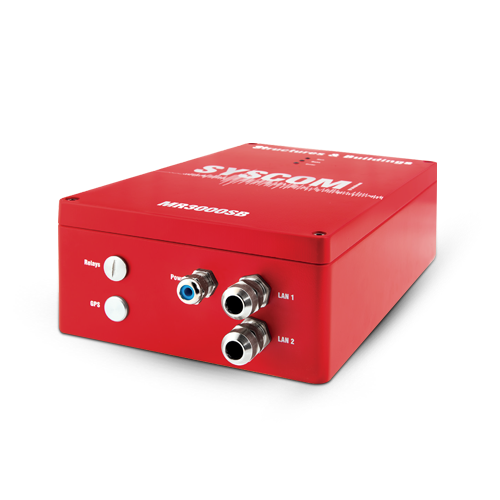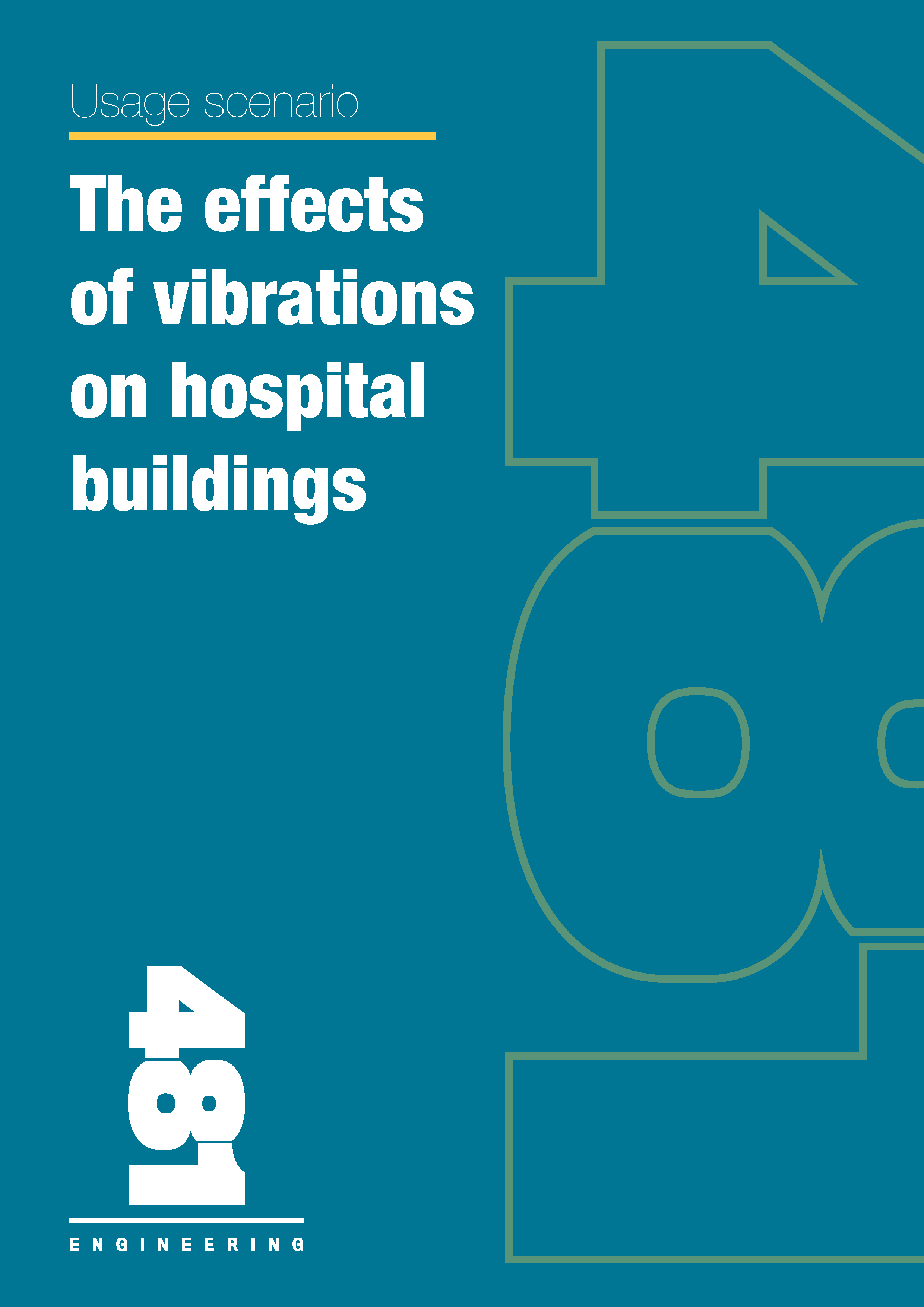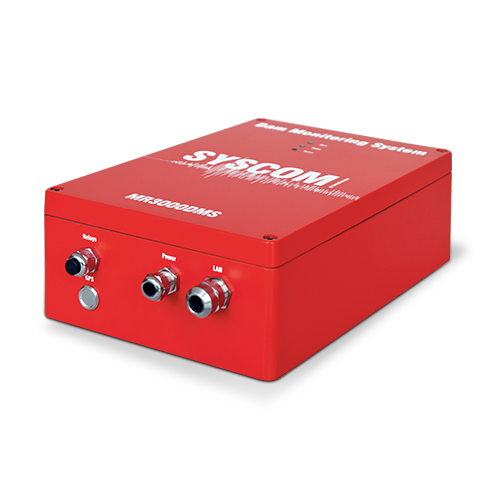
Hospital monitoring: MR3000SB
Hospitals are buildings whose normal functioning is essential – due to emergency services, as well as due to the surgery sections inside them. Keeping them intact and operational in case of a major event – such as an earthquake – is vital for civil protection.
The vibration monitoring technology is useful in order to assess buildings with maximum accuracy; in this precise case, also in order to fully adhere to the active legislation for buildings of class I of national importance, meaning hospitals as well.
The vibration monitoring for hospitals is useful for:
- Gathering essential information for technical assessment and further establishing the strategy for medium and long-term meintenance – in the case of buildings that have exceeded their design lifetime;
- Identifying equipment vulnerable to vibrations and unplanned movements and establish remediation and retention solutions;
- Highlighting the current state of the construction, essential in relationship with insurance companies and potential clients;
- Avoiding and reducing material losses and protect human lives in case of a strong motion event.
Regarding hospitals, the monitoring system can be further integrated with smart solutions that can make sure to:
- Entirely stop / partially stop the gas supplying
- Entirely/ partially stop the sensible equipments (those who produce vibrations that can have a resonance effect in contact with the seismic waves)
- Activate the electric generator (for smooth transition between the two sources, in case of a problem with the main energy provider)
- Start the evacuation system (automatic doors)
- Alert the personnel present on the premises
- Alert the Integrated Department for Emergeny Situations, in order to intervene and redirect the wounded towards other medical units.

Main Benefits




Main Features
- IP67 compact unit containing tri-axial MEMS sensor, digital recorder, battery and communications
- No need of periodic calibration
- Digital interconnection through Fiber Optics or Ethernet copper type cable with minimal noise
- Common timing and common triggering
- Automatic alerting and self-test
- Remote control and data retrieval
Technical specifications
Data acquisition
- General principle 4th order delta-sigma ADC per channel
- Resolution 24 bits
- Sampling-rate 50, 100, 200, 400, 500, 800, 1000, 2000 sps
- Number of channels 3
- Channel to channel skew None, simultaneous sampling on all channels
- Data Filter Anti-aliasing filters
- Trigger Filter Digital IIR filter: 0.5 – 15 Hz band-pass (Strong Motion Applications)
Data acquisition
- General principle 4th order delta-sigma ADC per channel
- Resolution 24 bits
- Sampling-rate 50, 100, 200, 400, 500, 800, 1000, 2000 sps
- Number of channels 3
- Channel to channel skew None, simultaneous sampling on all channels
- Data Filter Anti-aliasing filters
- Trigger Filter Digital IIR filter: 0.5 – 15 Hz band-pass (Strong Motion Applications)
Trigger and de-trigger
- Principle Level trigger or STA/LTA or automatic adjustment of trigger level
- Trigger voting logic Predefined AND or OR combinations, individual channel votes
- Trigger level 1 mg to 4 g
- STA / LTA STA: 0.1 to 25s, LTA: 1 to 250s, ratio 0.1:25
- Smart Trigger / De-Trigger Automatic adjustment of trigger level
Microprocessor
- Recording
- Principle Event recording (time history), continuous time recording or manually triggered
- Header Contains status information at time of trigger and event summary
- Pre-event recording 1-30 s (in 1 second steps)
- Post-event recording 1-100 s (in 1 second steps)
- recording time Unlimited
- Memory Removable SD flash card (4GB)
- Timing
- System clock 1ppm, could be disciplined by NTP or GPS (optional)
- Data / User Interface
- Web interface Easy to use command & control through embedded web server
- Intelligent Alerting System initiates communications and sends e-mail when an event is recorded
- FTP Built-in FTP client to push data to an FTP-server
- API Application programming interface REST with extended functions available
- Alarm triggers
- Principle Two alarm levels independently settable as threshold levels or user-defined curves, with various notification options (individually settable for each axis)
- Alarm level range 1 % to 100% full scale
- User-defined alarm Thresholds and frequencies individually settable for each axis
- System status 3 LEDs Run, Recording, Warning/Error. Internal LCD with status info and important settings
Network capabilities
- Common trigger and Configurable with AND/OR logic, for every device within the same network common alarm
- in LAN network Typically 1 ms with NTP protocol
- number of MR3000SB 32, in Master/Slave configuration
- Remote control VPN, DDNS
Power Supply
- Power supply 100 – 240 V AC, 50 – 60 Hz, internal AC/DC. Optional DC power 10-36 V DC
- Internal battery 12 V, 12 Ah
- Consumption 4 W (with charged battery), 25 W (AC max. and battery in charge)
- Battery autonomy Typical 60 hours in stand-alone mode
I/O (glands and connectors)
- Power M16 cable gland 4-11mm / Terminals on the AC/DC
- Kit Relays (3) On request, M16 cable gland 7-11mm / Terminals
- Kit daisy-chain LAN On request, RJ45 panel mount
- Kit daisy-chain FO On request, M20 cable gland 6-13mm / ST connectors
- Kit GPS On request, connector and GPS antenna with 5 m cable for time synchronization
LAN cables
- Fiber Optic type Multimode OM2 fiber with wavelength 1300 nm, 50/125 μm, Rx/Tx
- Ethernet Copper type Cat 5e, <100m
Relays kit
- Configuration 3 output configurable relays, No/Nc
- Current 2 A, 30 V DC
Acceleration sensor
- Principle Micro-machined capacity MEMS accelerometer
- Hysteresis None
- Noise (10 to 1000 Hz) 7 μg/√ Hz
- Frequency range DC to 600 Hz
- Dynamic range 100 dB @ 200 sps
- Measuring range ±4 g
- Sensitivity 25 V/g differential
- Scale factor error < 1 %
- Orientation Horizontal or vertical mounting, to be specified when ordering
- Self test Test-pulse, configurable
Housing
- Dimensions 330 x 230 x 110 mm
- Weight 5 Kg
- Protection degree IP67, temporary static immersion in water
Environmental
- Shock 30 g/11 ms half-sine
- Heat -20 °C to +50°C
- Humidity up to 100% RH
Regulations
- EMC IEC 61326-1
- Electrical safety IEC 61010
- Origin Swiss Made

For projects associated with other types of structures:
SHORT-TERM MONITORING

CONSTRUCTION SITE

STRUCTURAL HEALTH

BLASTING
